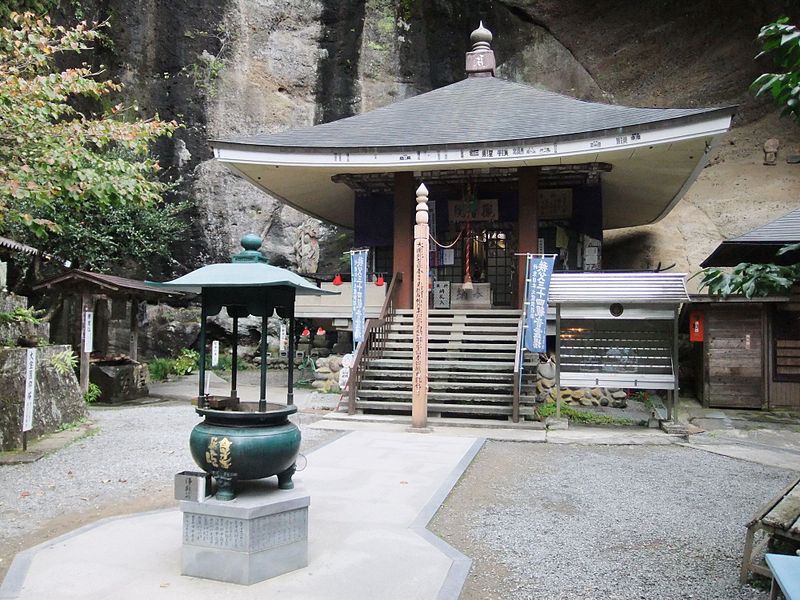Take the Chichibu 34 Kannon Pilgrimage
Shikoku's 88 Temple Pilgrimage is undoubtedly Japan's most famous Buddhist excursion. But the country has a few walking pilgrimages that are just as historic and beautiful, such as the Chichibu 34 Kannon Pilgrimage. Take a look with us at a few of the temples in Chichibu and their understated beauty.
By Kelly Merks#1 — Shimabu-ji
The Lotus Sutra, a key text in Mahayana Buddhism, which is significant in Japan and China, mentions 33 different forms of Kannon, who is the deity of mercy and compassion and is often called upon by those who feel distressed. This has resulted in a number of 33-temple Kannon pilgrimages around Japan, including the Bando 33 Kannon Pilgrimage in the Kanto area and the Saigoku 33 Kannon Pilgrimage in Kansai. Add to these the Chichibu 34 Kannon Pilgrimage and you have the Japan 100 Kannon Pilgrimage. In 1536, the 34th temple was added to the Chichibu pilgrimage, rounding the official number up to 100 Kannon temples and a 100-kilometer (62-mile) journey in Chichibu alone.
#2 — Shimpuku-ji

https://en.wikipedia.org/wiki/Chichibu_34_Kannon_Sanctuary#/media/File:Chichibu_02_Shinpuku-ji_01.jpg
The second temple on the pilgrimage, Shimpuku-ji, is 40 minutes up a zigzagging slope from the starting point at Shimabu-ji. As most of these temples don't have resident priests or monks, members of the community take pride in maintaining the grounds of their neighborhood temple.
#4 — Kinsho-ji
By contrast, some of the pilgrimage's temples are in urban areas of Chichibu City, Kinsho-ji among them. Kinsho-ji is noted for the giant straw sandals, or waraji, hanging from its main gate. It also has an impressive 1,319 stone Buddhas, and a beautiful statue of the Kosodate Kannon, the child-rearing goddess.
#30 — Houn-ji
At the far end, Houn-ji rests near the end of the Chichibu Railway, about 1 kilometer (0.62 miles) from Shiroku Station. It stands at number 30 of the 34 temples.
Here sits a statue of Kannon that was supposedly carved by an ancient Chinese emperor. This Kannon is one of two Nyoirin Kannon on the trail, which means the Kannon possesses a magic ball. However, the Kannon are usually hidden and only open to the public every 12 years. Catching a glimpse of this already rare type of Kannon statue would be a privilege most pilgrims never get.
#31 — Kannon-in
Kannon-in is the remotest of the temples on the pilgimage, about 7 kilometers (4 miles) and 11 kilometers (7 miles), respectively, from the nearest temples of Hosho-ji (#32) and Kikusui-ji (#33), and more than 15 kilometers (9 miles) from the preceding Houn-ji. Kannon-in rests on Mount Kannon in Ogano City—well outside urban Chichibu, and the journey is a good day's hike. Several beautiful ryokan, Japanese-style inns, are in the area for travelers to rest in after trekking through the nearby mountain range.
#34 — Suisen-ji

http://www.minano.gr.jp/learn/%E6%9C%AD%E6%89%8034%E7%95%AA%E6%B0%B4%E6%BD%9C%E5%AF%BA%EF%BD%9E%E7%A7%A9%E7%88%B6%E6%9C%AD%E6%89%80%E5%B7%A1%E3%82%8A%EF%BD%9E/
Suisen-ji, the last temple to be added to the pilgrimage nearly 500 years ago and thereby completing the 100 Kannon Pilgrimage, is the temple of rebirth. A sandbox in front of the main hall contains sand collected from all 100 Kannon temples on the full pilgrimage. Suisen-ji is also featured in an ukiyo-e print made in 1859, which is currently featured in the City of Boston's Museum of Fine Arts collection.
Honorable Mention: Mount Chichibu (Kozushima)
A small Japanese island far from the Chichibu mountains pays homage to the pilgrimage in its own way. Administered as part of the city of Tokyo but located some 150 kilometers (93 miles) to the southeast, at the summit of Kozushima's Mount Chichibu stands a temple with an 11-faced Kannon and 34 stone images representing each of the Chichibu pilgrimage temples. Here, climbers can symbolically visit each of the temples in a single act. On other parts of the island, visitors can simultaneously visit all 33 sites of the Saikoku pilgrimage route and the 33 Bando temples. One hundred temples in one day? That's possible on Kozushima!
For a full list of all the temples on the Chichibu 34 Kannon Pilgrimage, including their geolocations, check Wikipedia below. Amazingly, it's the most complete list you'll find in English!









